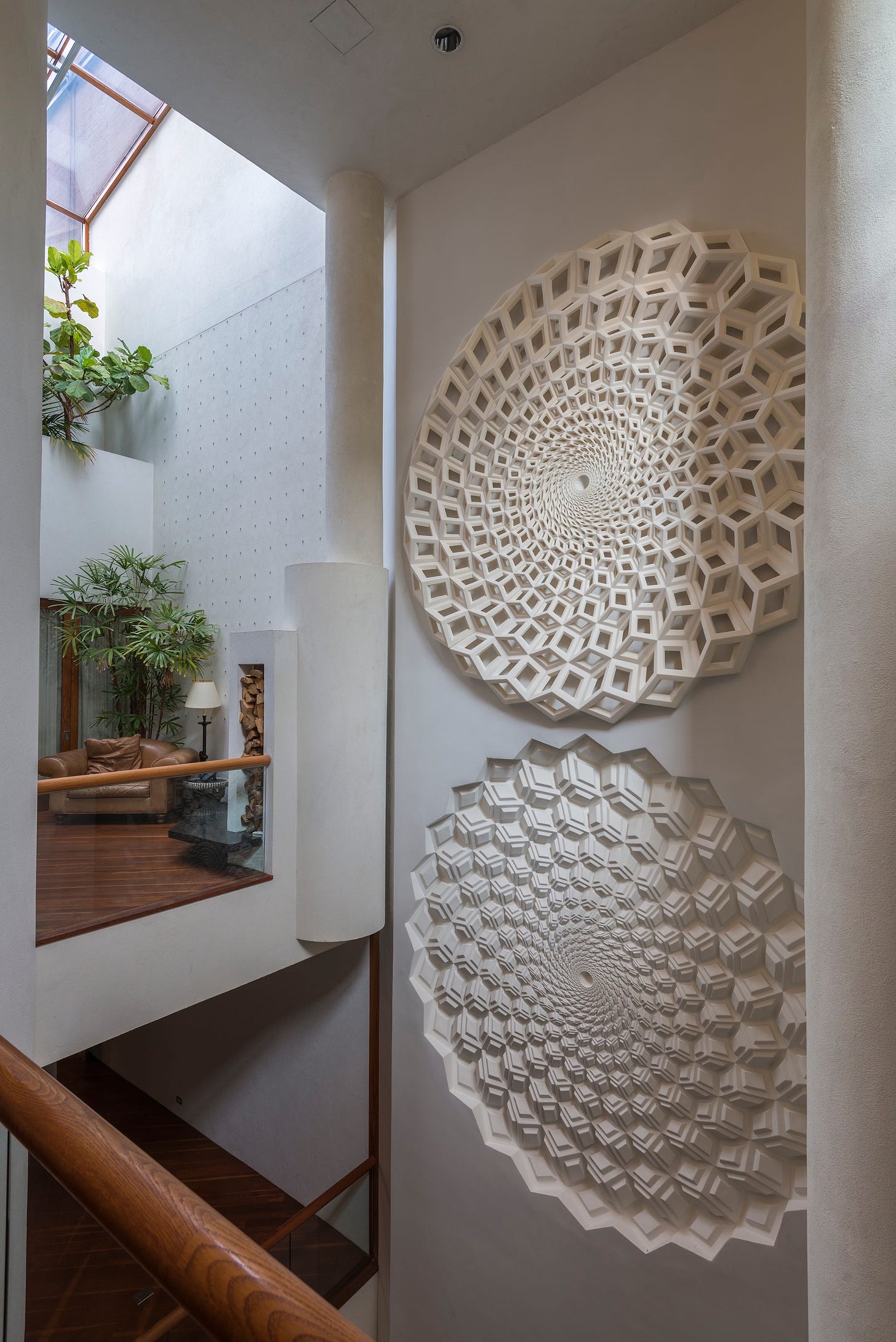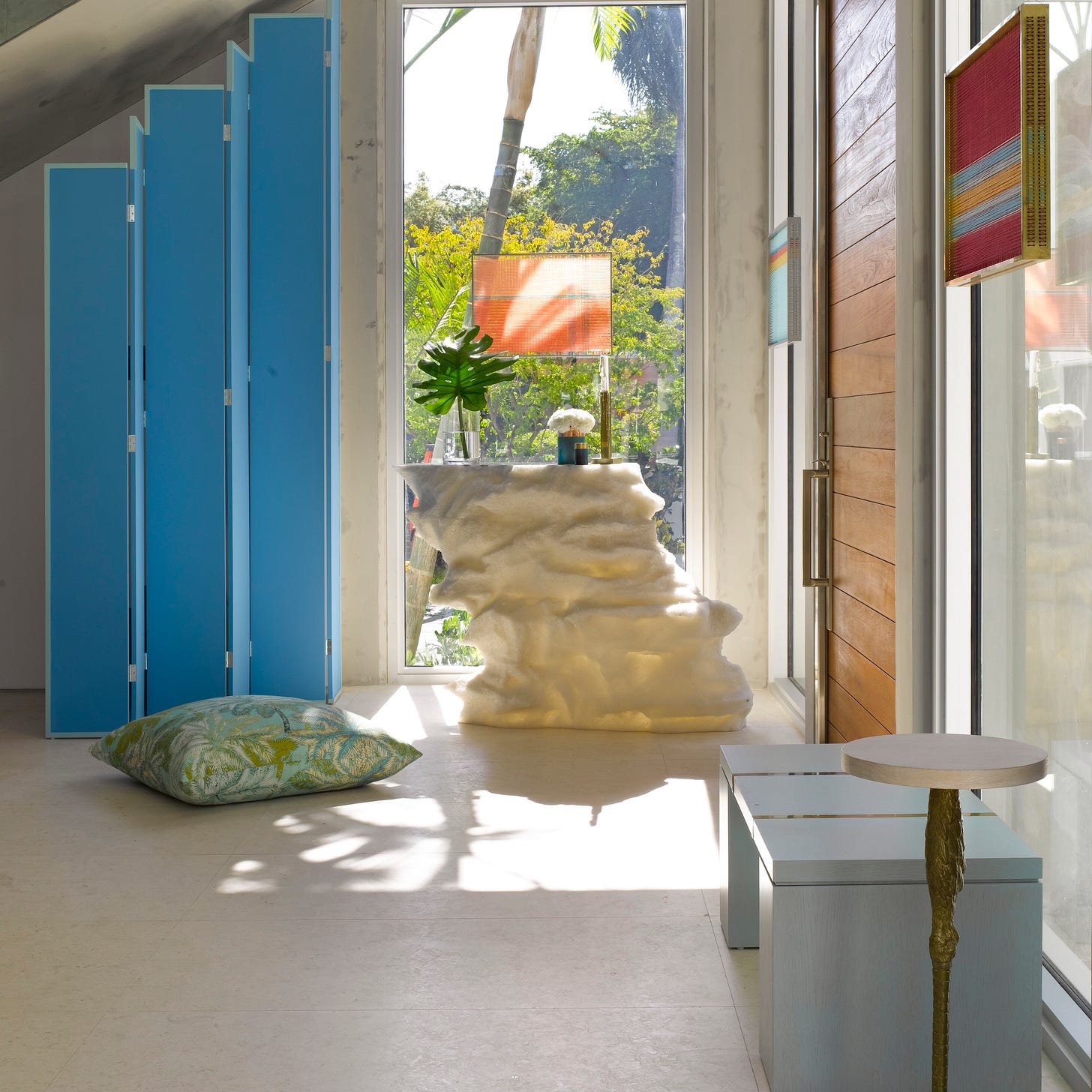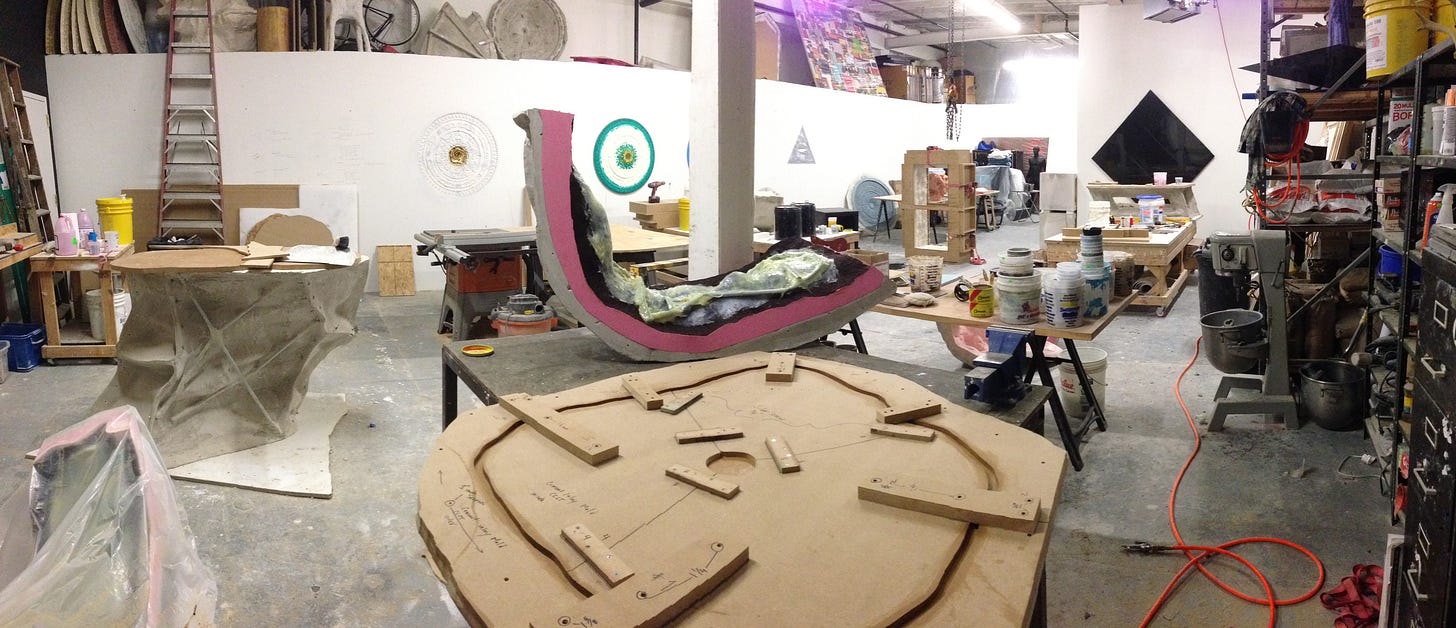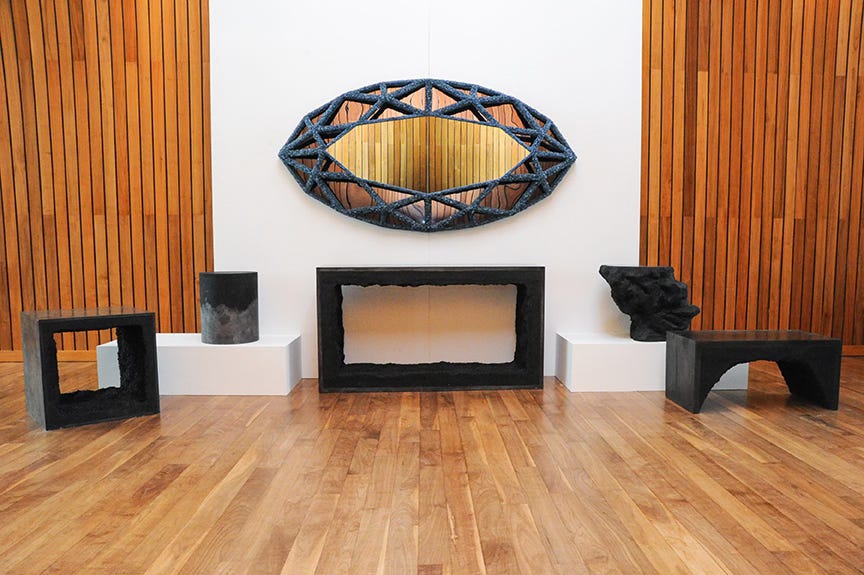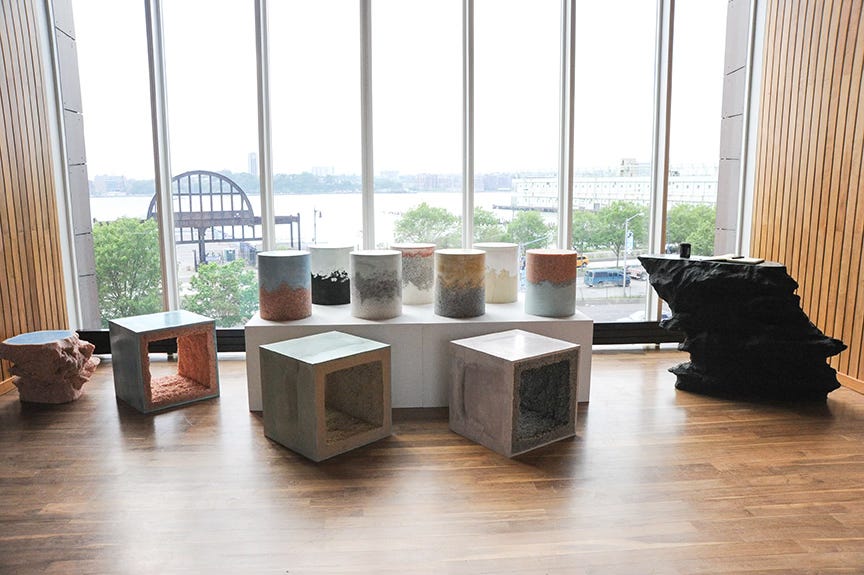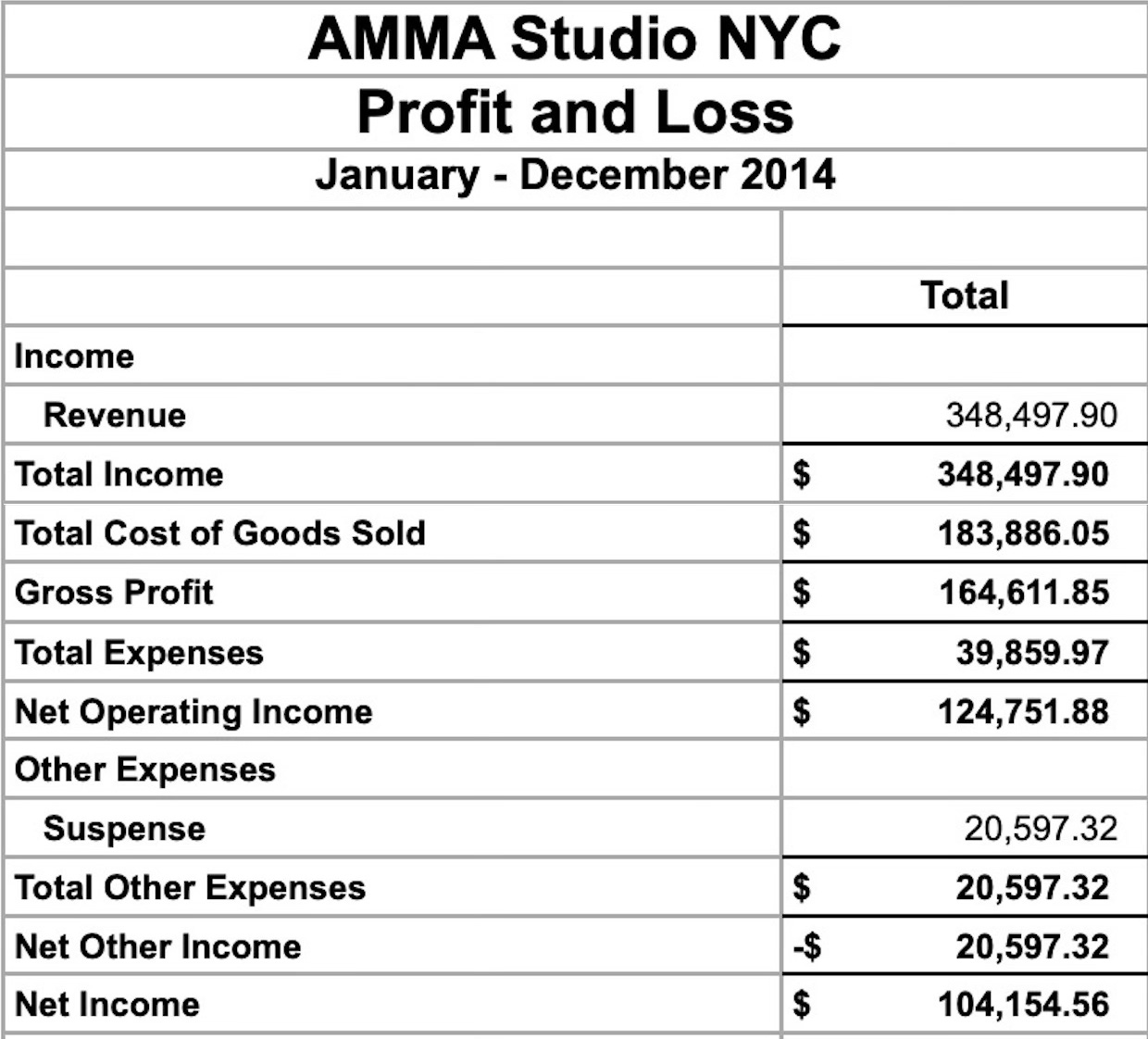How I Built This: Part 1 – Investing in Your Studio and Your Survival Before Anything Else.
I struggled to make a living as a sculptor for nearly a decade. Then, through a remarkable series of events—one involving an unforgettable commission for Sean Parker (yes, the Facebook guy, that's a story I'll share at another time)—I found myself holding the most significant sum of money I'd ever seen: $200,000. Despite this sudden financial cushion, I had no gallery representation, no upcoming exhibitions, and scarcely any finished work to speak of. Still, I instinctively knew this was a rare chance to build a sustainable foundation for my future. I've always believed that when preparation meets opportunity, the universe delivers.
The Parker Project
That opportunity arrived through an unexpected introduction from a writer friend who connected me with an up-and-coming interior designer. After visiting my studio, the designer became intrigued by the unique materials I used in my sculptures and asked if I could create a "rock bar" for one of his upcoming projects. Fresh off completing what I called the Parker Project, I decided to invest significantly in my future: renting a spacious 5,000-square-foot studio in Bushwick. At the time, this part of Bushwick, near the Myrtle-Wyckoff stop on the L train, felt like the middle of nowhere. To make this financially manageable, I divided the large space into four separate studios, bringing my personal rent down dramatically—to just $100 a month, plus utilities. I even built a small apartment and shower within the studio—technically not permitted—but the financial freedom this created was invaluable, as it eliminated the need to rent a separate living space. Although the construction and related expenses set me back around $15,000 to $20,000, the investment was well worth it for its stability and flexibility.
With that newfound financial breathing room, I jumped at the opportunity to experiment with furniture design, even though the designer’s commission offer was only $3,500. I would lose money on this deal, but it was worth it as I saw this might open up a new opportunity to make income. He ended up commissioning not just the rock bar but also a small drum side table, both cast salt, for the Elle Decor showcase house during Art Basel Miami in 2013. At that time, with barely any steady income and minimal gallery support, this opportunity felt like a pivotal turning point. It confirmed my belief that saying yes—even to seemingly modest opportunities—can lead to transformative results, especially when the right people are watching.
That Rock Bar changed the course of my life. After presenting it at the showcase in Miami, Stella McCartney's team saw the work and asked if I had more work or a collection, as she was very interested in having some pieces for her upcoming Palo Alto Store. I had nothing else to show, but their interest sparked a six-month bonanza to create a collection and co-found a furniture company with the same interior designer who had commissioned the original bar. Without diving too deep into the details, we secured an investor who contributed an additional $200,000 to launch the company. Between the 180,000 I had left and this new investment, we had enough runway to launch the company we named AMMA, which debuted at Sight Unseen OFFSITE in May 2014.
From January 2014 until the company's launch, I dedicated myself entirely to creating prototypes for the exhibition. To bring my vision to life, I strategically purchased essential equipment and assembled a team of young artists and sculptors to assist with fabrication. At that stage, I couldn't afford permanent employees, so everyone worked as contractors. Hiring an art and design PR firm further bolstered our launch strategy. My goal was clear: manage expenses carefully, build up a compelling body of work, and ensure our survival until we reached the launch.
This moment represented a critical turning point, where opportunity and preparation fused together, reshaping my journey as an artist, entrepreneur, and now, unexpectedly, a designer. The essential factor was having an affordable studio space where I could keep production costs minimal, allowing me to sustain myself, build a team, and invest strategically in the launch. Expenses quickly mounted: we had to budget for PR, booth space rental at OFFSITE, logistics, and even a lavish launch party at the Standard Hotel, which attracted 800 attendees and cost nearly $40,000 for just two hours. It was undeniably a major gamble, but we were confident that our innovative designs would capture attention in a way the design world had never experienced before. Taking calculated risks is crucial when opportunities arise. Although initially uncomfortable with the new label of 'designer,' I embraced it fully, recognizing that my past attempts to break into the traditional art world had repeatedly left me financially strained.
The launch of AMMA exceeded all expectations. We presented a diverse collection of 30 pieces, including consoles, side tables, drums, a mirror, lamps, and even a coffee table made entirely of actual coffee. The innovative use of materials—sand, salt, silica, glass, crushed marble, coffee, and cement—captured the press's imagination, leading to extensive media coverage that felt almost surreal. Press inquiries flooded in so quickly that I wasn't sure if this level of attention was typical or a miraculous stroke of luck. Immediately following the launch, orders poured in, and Stella McCartney's team initiated discussions to commission work for her store. It finally felt like my years of struggle had culminated in discovering exactly what I was meant to be doing. I'm sharing these experiences openly so aspiring designers can understand the realities behind building a successful design career—the challenges, triumphs, and strategic decisions that make it possible. I'll continue to break down every part of this journey to give you a transparent look at what it truly takes.
For full transparency, AMMA earned $348,000 in its first six months, generating a $104,000 profit. I reinvested every dollar back into the studio. In 2015, we upgraded to a larger space, expanded to a team of seven or eight employees, started participating in fairs, and I rebranded the studio after stepping away from the original partnership structure. By the end of that year, revenue surpassed $1 million between my art sales and design work. Personally, I didn’t take home anything from the design work for the first three years—because in December 2014, I was hit with a lawsuit that dragged on for 18 months. It was a grueling process that wiped out nearly all profits in legal fees while I was also trying to fuel the studio’s growth.
By 2017, I had repaid the original investor $450,000, covering legal fees, their initial stake, a series of work, and profit shares per our agreement. I finally became the sole owner of the company—an initial hardship but the best long-term move I could have made. During those first three years, my only personal income came from fine art sales outside the design studio.
A beautiful and brutal start? Absolutely. But I never gave up. I pushed through, cleared the debt, and eventually started seeing profits. I knew in my heart that I had something special, and I was willing to endure the hardships to make it a success—no matter what it took. I’m sharing this because I believe in full transparency when it comes to money. It’s essential to be open about how it’s made, spent, invested, or lost—and just how long financial success truly takes to achieve.
Key Takeaways for Investing in Your Studio and Making It:
Secure Financial Stability First: Establish a Solid Base
Prioritize an affordable studio and minimize expenses—low overhead is essential. Without initial funds, focus on securing them through part-time work and disciplined savings to create a financial buffer. This stability enables full commitment. I persevered until I secured that Bushwick space and optimized it. Early sacrifices ensure a confident launch. You have one opportunity to begin effectively—don’t let financial pressures undermine it.
Seize Strategic Opportunities: Select with Purpose
Remain open to smaller or modestly compensated projects with the potential to elevate your profile. Don't dismiss offers with limited immediate returns, as this could be a long-term oversight for short-term returns. Though initially unprofitable, the $3,500 rock bar commission catalyzed AMMA’s creation. Assess opportunities for long-term value—growth, visibility, networks—beyond short-term profit. A well-chosen project can unlock significant future prospects.
Invest Thoughtfully in Tools and Talent: Allocate Wisely
Acquire only essential equipment and engage flexible contractors to maintain cost efficiency and avoid overextending financially. I relied on core tools and temporary support to start. Many studios falter by investing heavily before establishing income. Confirm consistent revenue before expanding resources. Validate your business’s viability before substantial expenditure.
Take Calculated Risks: Proceed Strategically
Embrace opportunities with measured boldness when the potential justifies the investment. Our $40,000 launch event, though ambitious, amplified our presence significantly. Evaluate each decision—ensure rewards like exposure or expansion align with risks. Prudence maintains stability, but strategic moves can drive breakthroughs. Calculated steps forward often yield transformative results.
Focus on Visibility and Branding: Build Your Presence
Exceptional work requires visibility. Invest in public relations, networking, and a professional digital footprint that reflects your identity. High-quality photography, an effective website, and targeted outreach are critical. For AMMA, I leveraged PR expertise to maximize impact. Attend industry events and pursue media exposure. A distinct brand and strong presence attract clients and opportunities.
Embrace Adaptability: Evolve with Opportunity
I defined myself as a sculptor until the Parker commission and rock bar project prompted a shift. I transitioned into a designer and entrepreneur, founding AMMA. Rigid adherence to one role could have limited me. Flexibility is key—success depends on delivering value, not preserving titles. Adapting enabled me to progress from struggle to achievement.
Reinvest for Long-term Growth: Strengthen Continuously
Redirect earnings into your venture to enhance capabilities and ensure sustainability. I reinvested in AMMA to solidify its foundation. Profits should fuel improvement—equipment, quality, scale—rather than short-term gains. This approach transforms an initial effort into a lasting enterprise.


